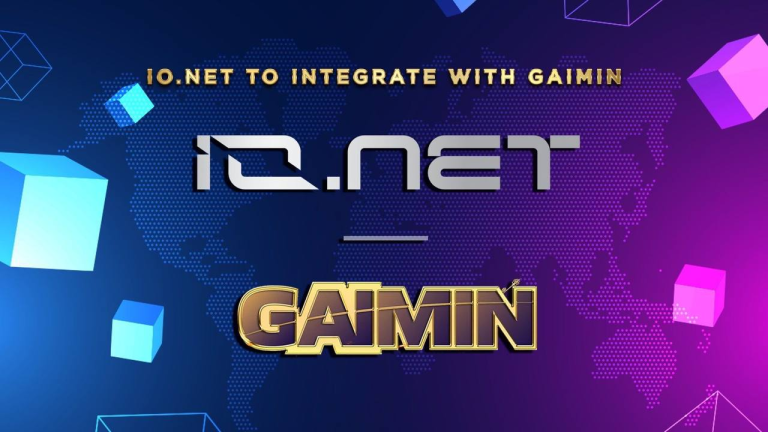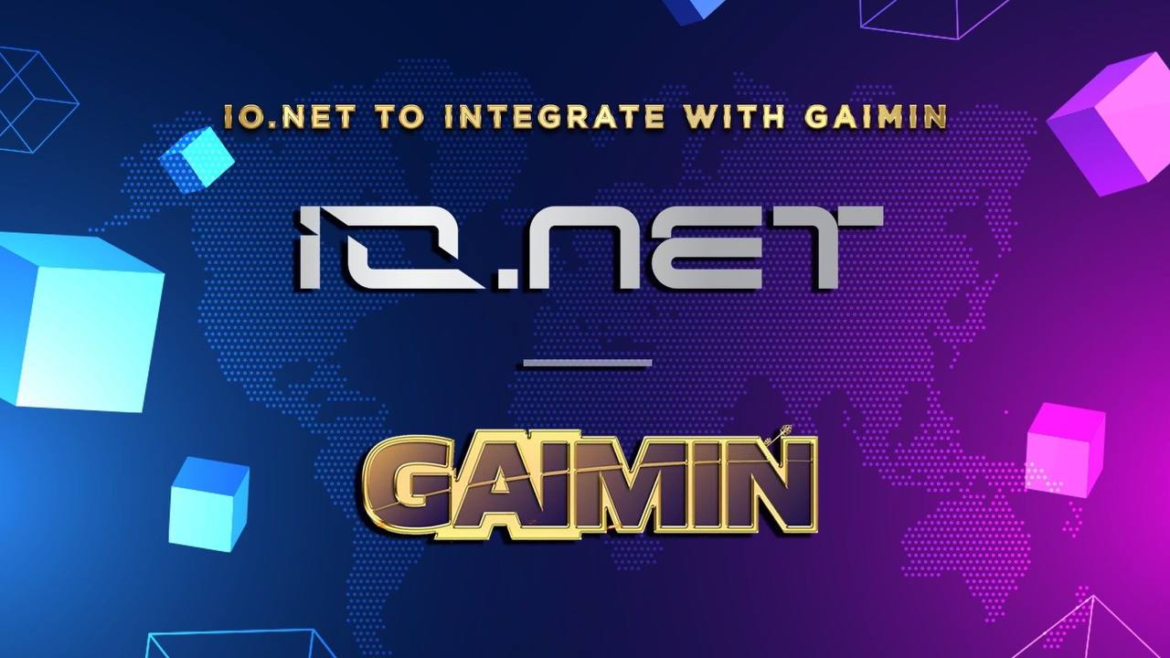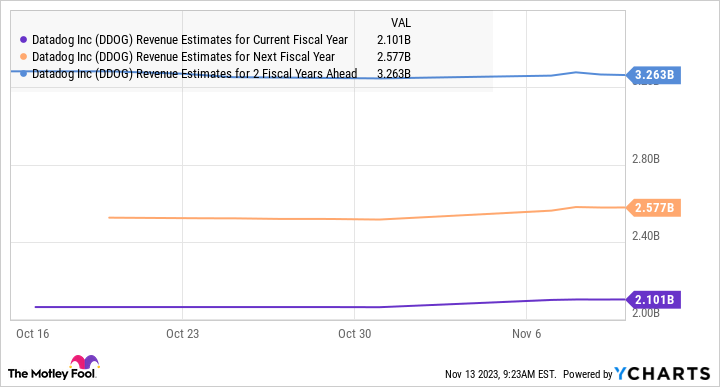 PRESS RELEASE. GAIMIN (www.gaimin.io), the world’s leader in delivering decentralised data processing power through gaimin.cloud (www.gaimin.cloud), and io.net (www.io.net) one of the world’s largest Decentralized Physical Infrastructure Network (DePIN) for AI compute have agreed to investigate how the synergistic technologies from both companies can be integrated to deliver the processing capability to support the growing […]
PRESS RELEASE. GAIMIN (www.gaimin.io), the world’s leader in delivering decentralised data processing power through gaimin.cloud (www.gaimin.cloud), and io.net (www.io.net) one of the world’s largest Decentralized Physical Infrastructure Network (DePIN) for AI compute have agreed to investigate how the synergistic technologies from both companies can be integrated to deliver the processing capability to support the growing […]
Source link
cloud
This Is Amazon’s Fastest-Growing Business by Far — and It Isn’t E-Commerce or Cloud Services
Pretty much all you have to know about Amazon‘s (AMZN 0.07%) fourth-quarter results is that the stock jumped close to 10% after they were announced. Yes, the Q4 results were that good.
Lower costs boosted profits for the company’s online shopping platform. Revenue for Amazon Web Services (AWS) vaulted 13% higher year over year. But as great as the news was for these units, there was an even better story: Amazon’s fastest-growing business, by far, isn’t e-commerce or cloud services.
Adding things up
Amazon CEO Andy Jassy said in the company’s Q4 earnings conference call that advertising revenue soared 26% year over year. That’s roughly double the growth rate for the company’s overall North America segment and AWS segment net sales. It’s also well ahead of the international segment’s year-over-year sales growth of nearly 17%.
CFO Brian Olsavsky noted that the impressive growth in advertising revenue was largely the result of sponsored products, where advertisers can run ads on Amazon’s e-commerce platform that promote their products. They can choose the keywords they want to target or allow Amazon’s systems to target keywords automatically.
Olsavsky said that Amazon’s “teams worked hard to increase the relevancy of the ads we show customers by leveraging machine learning.” He added that the company continues to improve the tools that enable advertisers to measure the return on investment for their advertising spending.
More to come
The trend of advertising revenue growth should continue, according to Olsavsky. And there are reasons to expect that the growth will accelerate.
Amazon recently began selling ads on its Prime Video streaming service. Customers can opt out of the ads by paying extra each month. All of the revenue generated by Prime Video advertising came after the end of the company’s fourth quarter.
Streaming advertising, in general, is a top priority for Amazon. Olsavsky stated that the company is exploring ways to boost advertising not only on Prime Video, but also on Fire TV, FreeVee, and live-streaming service Twitch.
Amazon is also working hard to make it easy for advertisers to spend their money on its platforms. For example, Jassy mentioned that the company is creating tools that enable advertisers to upload a picture with generative AI creating advertising copy based on the picture, and vice versa.
Extra benefits for Amazon
Advertising on Prime Video could also provide extra benefits for Amazon. Jassy said in the Q4 call, “We have increasing conviction that Prime Video can be a large and profitable business on its own.” Ad revenue could help make this scenario a reality.
Amazon’s profitability is already increasing nicely. In Q4, the company’s earnings skyrocketed to $10.6 billion from $0.3 billion in the prior-year period. Jassy’s vision of Prime Video becoming profitable would help even more.
But there’s another angle for Amazon here, too. Jassy stated that ads on Prime Video will enable the company to “continue investing meaningfully in content over time.” New compelling content could attract more subscribers to Amazon Prime.
That’s a big deal for Amazon. Bank of America analysts once estimated that Prime members spend close to four times more than non-Prime shoppers.
Should you buy Amazon stock because of advertising?
I don’t think that Amazon’s fast-growing advertising business is the main reason to buy the stock. My view is that the strong AI tailwind for AWS ranks as the best thing Amazon has going for it.
However, the best stocks give investors multiple reasons to buy. And I’d argue that Amazon is one of the best stocks around. Its advertising growth makes it even better.
Bank of America is an advertising partner of The Ascent, a Motley Fool company. John Mackey, former CEO of Whole Foods Market, an Amazon subsidiary, is a member of The Motley Fool’s board of directors. Keith Speights has positions in Amazon and Bank of America. The Motley Fool has positions in and recommends Amazon and Bank of America. The Motley Fool has a disclosure policy.
XRP Price Will See 1,000% Rally When ‘Black Cloud’ Dissolves, What This Means
The host of the ‘Discover Crypto’ YouTube channel has boldly claimed that the XRP price could surge by 1000% from its current price range. He highlighted the Securities and Exchange Commission’s (SEC) case against Ripple as one of the factors that could spark this price surge.
XRP Price Could Do A 10X When Ripple And SEC Settle
In a video posted on the YouTube channel, the analyst suggested that XRP would rise significantly once Ripple and the SEC finally settled. He described this long-running legal battle between both parties as a “black cloud” that has continued to cause uncertainty in the XRP market.
He further noted how investors strongly dislike uncertainty, which could explain why they have continued to trade with caution rather than doubling down on their XRP investments. Meanwhile, the ‘Discover Crypto’ host believes that irrespective of how much Ripple ends up being fined, a settlement will no doubt be ‘positive news’ and the trigger for the price surge.
The crypto analyst went on to break down four other reasons why he believes that XRP’s price could surge by 1000%. First, he stated that a Ripple Initial Public Offering (IPO) could also trigger a significant rally for XRP. This price pump, he claims, will be facilitated by market makers and whales who would want to create a positive sentiment around the IPO launch.
To back up this point, he alleged that the biggest move for Bitcoin in 2021 wasn’t as a result of Bitcoin Halving or any market cycle but because of the Coinbase IPO. These same market makers are said to have pumped the flagship crypto’s price then.
Token price at $0.53 | Source: XRPUSD on Tradingview.com
Other Factors That Could Spark XRP’s Parabolic Move
The crypto analyst outlined crypto legislation as the third reason why XRP could rise exponentially from its current price levels. While admitting that the entire crypto market will benefit from this, he expects XRP to be one of the tokens that enjoy the most gains from this development.
Institutional adoption is also predicted to be another catalyst in XRP’s parabolic move. The ‘Discover Crypto’ host noted how the Spot Bitcoin ETFs have opened the doors to mainstream adoption. As such, he expects that more entities will want to add crypto tokens like XRP to their portfolio alongside their Bitcoin exposure.
The fifth factor that could spark the 1000% rally for XRP is the Bitcoin Halving. The crypto analyst predicts that all crypto tokens, including XRP, are going to pump post-halving. As such, he believes that buying XRP at $0.50 now is definitely a steal.
Featured image from Crypto News, chart from Tradingview.com
Disclaimer: The article is provided for educational purposes only. It does not represent the opinions of NewsBTC on whether to buy, sell or hold any investments and naturally investing carries risks. You are advised to conduct your own research before making any investment decisions. Use information provided on this website entirely at your own risk.
Google Cloud also said Flare has become part of the Google for Startups Program, which aims to accelerate the growth of Web3 startups.
Google Cloud, the cloud computing and data storage unit of the technology giant Google, has entered into a strategic partnership with the Flare blockchain to join the network as a validator.
The cloud unit has become the latest corporate institution to join the growing list of validators on Flare, verifying blocks, confirming transactions, and proposing new updates to the protocol. These efforts contribute to bolstering security and fostering the overall growth of the Flare blockchain ecosystem.
Google Cloud to Provide Infrastructure Solutions to Flare
According to a Monday press release, Google Cloud will also serve as a key infrastructure provider for the Flare Time Series Oracle (FTSO). This oracle, known for its high decentralization, plays a pivotal role in providing accurate price data on the Flare network.
The move makes the company the 100th organization to embrace FTSO while serving as a validator for the flare network.
The active participation of Google Cloud in both validation and infrastructure provision is expected to play a crucial role in reinforcing Flare’s commitment to decentralization and advancing accessibility to decentralized data across diverse applications and other chains.
“As the blockchain for data, we are excited that Google Cloud is joining our existing decentralized network of infrastructure providers who contribute to Flare. Our work together will help deliver a more robust decentralized smart contract platform that places decentralized data at its core,” said Hugo Philion, Co-Founder and CEO of Flare.
The protocol said it is on a mission to provide decentralized applications to both its ecosystem and other networks with high-quality access to decentralized data, including price and time data series, blockchain event and state data, and Web2 API data.
Flare Joins Google for Startups Program
James Tromans, the head of Web3 at Google Cloud, emphasized the importance of data access at scale to elevate relevant blockchain use cases and enhance global adoption of the technology.
Tromans stated that the company becoming a validator on the Flare network will help support the protocol’s mission of providing real-time data to decentralized applications.
In parallel, Google Cloud said the protocol has become part of the Google for Startups Program, which aims to accelerate the growth of Web3 startups.
The Google program is expected to accelerate the growth of Web3 startups by providing developers on the Flare network access to financial support from the US-based tech giant and its business partners.
Reacting to the news of the partnership with Google Cloud, the network’s native token FLR surged 15% to around $0.02 with a market cap of $656 million at press time, according to CoinMarketCap data.
next
Blockchain News, Cryptocurrency News, News
You have successfully joined our subscriber list.
IBM Strengthens Hybrid Cloud and AI Platforms With $2.3 Billion Acquisition
International Business Machines (IBM 0.31%) has a knack for using acquisitions to bolster its growth businesses. The tech giant occasionally goes big, as it did with the $34 billion acquisition of Red Hat in 2019, but most of its acquisitions are smaller.
Most recently, IBM shelled out $4.6 billion for financial and operational IT management and optimization software provider Apptio. Apptio’s products can help IBM’s clients keep cloud spending under control as they modernize their IT infrastructures.
IBM announced on Monday that it’s following up the Apptio acquisition with another significant purchase. The company has agreed to acquire StreamSets and webMethods, two products that comprise what current owner Software AG calls a “super integration platform-as-a-service.” The deal will cost IBM about $2.3 billion and be funded from the company’s available cash on hand.
Solving a thorny problem
Enterprises use a wide variety of software and tools. Often, these tools don’t work nicely together. One solution is to dedicate software engineering resources to building bespoke integrations between tools. This works until it doesn’t. These integrations tend to be fragile, requiring additional resources to fix when something goes wrong.
The picture is complicated further when an enterprise needs to connect both modern cloud applications and legacy software running on its own servers. A cloud-based customer relationship management tool may need access to data squirreled away in an application that’s been running on-premises for decades, for example. Making that connection in a reliable, low-maintenance way is tricky.
An iPaaS, or integration platform as a service, aims to solve this problem. Using an iPaaS, connecting two applications is no longer a software engineering project. If the marketing team wants to automate a workflow, pulling data from multiple places and connecting multiple applications, the iPaaS makes it happen with minimal fuss.
While a standard iPaaS is focused on connecting modern cloud-based applications, the iPaaS platform IBM is acquiring takes it a step further by supporting integrations with legacy software. The platform also helps solve the issue of connecting applications in cases where data residency rules add another layer of complexity.
IBM is all in on hybrid cloud computing. The company helps its clients modernize their IT infrastructures, which usually involves running workloads on multiple public clouds as well as on private clouds. An iPaaS product that seamlessly connects all those workloads is a valuable addition to IBM’s suite of hybrid cloud software products.
This acquisition also boosts IBM’s artificial intelligence (AI) business. StreamSets is all about data ingestion, and IBM will use it to add data ingestion capabilities to its watsonx AI platform.
Focusing on what works
While IBM is seeing some clients pull back on spending in some areas, digital transformation and application modernization are in high demand. IBM’s clients are looking for projects that can deliver cost savings, productivity gains, and efficiency improvements.
The acquisition of StreamSets and webMethods will strengthen IBM’s hybrid cloud and AI platforms. Notably, the platform IBM is acquiring is growing, already profitable, and has significant recurring revenue. Around 50% of IBM’s total revenue was recurring in nature during the third quarter. By 2027, the market for integration software is expected to top $18 billion.
IBM has started to find its groove after a decade-long transformation effort. Revenue should grow by 3% to 5% this year despite an uncertain economy, and free cash flow is set to expand by more than 10% to $10.5 billion. As IBM continues to push its hybrid cloud and AI platforms, the $2.3 billion acquisition of StreamSets and webMethods will make them more compelling for enterprise customers.
Timothy Green has positions in International Business Machines. The Motley Fool recommends International Business Machines. The Motley Fool has a disclosure policy.
This High-Growth Cloud Stock Crushed Earnings, and It Isn’t Done Soaring Yet
Shares of Datadog (DDOG 4.58%) shot up 28% on Nov. 7 following the release of the company’s third-quarter results, which crushed Wall Street’s expectations. It looks like the cloud specialist could sustain its red-hot momentum going forward as well.
That’s because Datadog raised its full-year outlook, suggesting that the demand for its cloud observability and security solutions remains strong. The company’s latest results come as a huge reprieve for investors — Datadog stock was clobbered in August, as the market wasn’t satisfied with its guidance then.
Let’s take a closer look at Datadog’s Q3 performance and check why the stock is likely to head higher.
Datadog’s solid results and guidance point toward healthy customer spending
Datadog’s Q3 revenue increased 25% year over year to $547.5 million, which was well ahead of the $524 million Wall Street estimate. What’s more, Datadog’s non-GAAP earnings nearly doubled year over year to $0.45 per share, crushing the consensus estimate of $0.34 per share.
Datadog’s guidance was the icing on the cake. The company expects Q4 revenue to land at $566 million at the midpoint of its guidance range, along with adjusted earnings of $0.43 per share. Both numbers are well ahead of analysts’ estimates of $0.35 per share in earnings on revenue of $543 million. Even better, Datadog raised its full-year revenue guidance to a range of $2.10 billion to $2.11 billion from the earlier estimate of $2.05 billion to $2.06 billion.
The new guidance implies a year-over-year increase of 25%, but it won’t be surprising to see Datadog delivering stronger growth thanks to the strong demand for its offerings and a massive addressable market. The company exited Q3 with 26,800 customers, an increase of 21% over the year-ago period. More importantly, it witnessed a stronger increase in the number of high-value customers.
The number of Datadog customers with an annualized recurring revenue (ARR) of more than $1 million increased 47% year over year to 317. Meanwhile, the number of customers with an ARR of $100,000 or more was up 20% year over year to 3,130. This improvement in customer spending can be attributed to the adoption of multiple Datadog products by its customers.
For instance, 46% of Datadog’s customers were using four or more of its products in the third quarter, up from 40% in the same period last year. The number of customers using six or more products increased by 5 percentage points year over year to 21%. All this explains why Datadog’s dollar-based net retention rate was slightly below 120% last quarter. This metric compares the ARR of Datadog’s customers in a quarter to the ARR from that same set of customers in the year-ago period, so a reading of more than 100% means that they increased their spending.
Looking ahead, Datadog seems capable of sustaining its solid growth due to a couple of factors.
First, the company expects annual cloud spending to jump to $1 trillion in 2026, double 2022’s estimated spending of $500 billion. This massive jump in global cloud spending means that the spending on cloud observability and security solutions that Datadog sells should increase as well.
This brings us to the second reason why Datadog is built for long-term growth — a nice jump in the company’s total addressable market. The company was sitting on a total addressable market worth $41 billion in 2022, which is expected to jump to $62 billion in 2026.
Faster growth could be in the cards
Datadog is set to sustain a high pace of growth in the coming years, with its 2025 revenue growth expected to be faster than 2024.
DDOG Revenue Estimates for Current Fiscal Year data by YCharts
Additionally, Datadog’s earnings are expected to increase at an annual pace of 32% over the next five years. Assuming Datadog does clock such impressive growth, its earnings could jump to $7 per share in 2028 (using 2023’s estimated earnings of $1.33 per share as the base). The stock is currently trading at an expensive 84 times forward earnings.
Assuming its forward earnings multiple comes down to 26 after five years, in line with the Nasdaq-100 index’s forward earnings ratio, its stock price could jump to $182 after five years based on the projected earnings of $7 per share. That would be a 75% jump from current levels, which is why investors would do well to buy this growth stock before it soars higher.
Harsh Chauhan has no position in any of the stocks mentioned. The Motley Fool has positions in and recommends Datadog. The Motley Fool has a disclosure policy.
Cloud firm Datadog Beats Street Q3 2023 Estimates, DDOG Stock Price Shoots 28%
Datadog has further given an optimistic outlook for the entire year of 2023 while forecasting Q4 revenue between $564 million and $568 million.
On Tuesday, November 7, cloud monitoring software firm Datadog Inc (NASDAQ: DDOG) reported stronger-than-expected results for Q3 2023 following which its stock price shot up by 28%, thereby registering the highest-ever single-day gains.
Datadog Performance in Q3 2023
The company reported Q3 2023 revenue of $547.5 million, marking a 25% year-over-year increase and surpassing estimates. This growth rate aligns with Q2 results. Analysts, surveyed by LSEG (formerly Refinitiv), had anticipated revenue of $524.1 million. Adjusted earnings per share stood at 45 cents, exceeding the expected 34 cents.
Datadog has also raised its full-year revenue and profit projections. The company now forecasts Q4 revenue between $564 million and $568 million, with full-year revenue reaching approximately $2.1 billion. These figures surpass consensus estimates of $543.3 million and $2.06 billion, respectively, according to LSEG analysts.
During a conference call, Co-founder and CEO Olivier Pomel mentioned that “AI-native customers” contributed 2.5% of Datadog’s annualized revenue for the quarter. However, Pomel didn’t confirm any specific partnerships with companies like OpenAI, Anthropic, or Cohere, which provide access to large language models capable of generating text based on minimal human input.
Datadog’s upturn has positively impacted other cloud-computing companies, such as MongoDB and Snowflake. This recent guidance represents the most optimistic outlook Datadog has provided all year. The company’s stock experienced a significant drop in August following a guidance reduction due to decreased cloud spending by businesses.
Navigating the Macro Challenges
Datadog develops cloud monitoring and security solutions that are compatible with Amazon Web Services, Google Cloud, and Microsoft Azure. Established in 2010, the company went public on the Nasdaq in 2019.
In late October, major cloud infrastructure providers signaled that some organizations’ cost-cutting initiatives were slowing down. Like many cloud-related companies, Datadog also felt the effects of businesses tightening their budgets. CEO Olivier Pomel confirmed this trend, mentioning that optimization activities among Datadog clients might be leveling off.
He stated:
“Overall, we continue to see the impact of optimization in our business, but we believe that the intensity and scope of optimization we’ve experienced in recent quarters are moderating.”
As Pomel noted, the fourth quarter has had a promising start, although usage tends to decrease during the holiday season.
Analysts at Bernstein Research, led by Peter Weed, expressed concerns before Datadog’s latest report about whether the company would follow the trend of improving quarter-over-quarter growth and maintaining steady year-over-year performance, or if it would show signs of disconnection and continue to experience year-over-year deceleration. According to the analysts, Datadog effectively addressed these concerns. They have given the stock the equivalent of a buy rating.
Read other business news on our website.
next
Business News, Market News, News, Stocks, Wall Street

Bhushan is a FinTech enthusiast and holds a good flair in understanding financial markets. His interest in economics and finance draw his attention towards the new emerging Blockchain Technology and Cryptocurrency markets. He is continuously in a learning process and keeps himself motivated by sharing his acquired knowledge. In free time he reads thriller fictions novels and sometimes explore his culinary skills.
You have successfully joined our subscriber list.
Polygon Labs announced on Sept. 29 that it has added Google Cloud to the decentralized group of validators powering its proof-of-stake Network.
Polygon said in its statement that Google Cloud is now among more than 100 validators who secure the Polygon PoS Network, a network that originally operated under the name Matic Network and which acts as a side-chain to the Ethereum blockchain.
Polygon noted that the infrastructure that powers YouTube and Gmail now powers Polygon PoS in part. It also called Google Cloud a “high-quality, trusted, [and] security-minded” validator and said that this adds additional security to the network.
The project also linked to an dashboard page indicating that Google Cloud has staked as much as 10,451 MATIC ($5,484) and earned 29.42 MATIC ($15) to date. Though Google Cloud is more recognizable than any of Polygon’s other validators, it is nevertheless one of the validators with the lowest amount of MATIC staked.
The partnership appears to have had little if any effect on the value of Polygon’s MATIC token. MATIC is up 1.2% over 24 hours while the entire crypto market is up 0.6%.
Polygon and Google Cloud are close partners
Polygon and Google Cloud initially began their partnership in April. At that time, both companies said the multi-year partnership would involve numerous goals.
The partnership terms indicated that Google Cloud would contribute cloud services to Polygon’s zkEVM scaling solution, provide a managed Polygon node hosting service to Google Cloud users, and support Polygon’s dedicated app-chain. The deal also included $200,000 of funding in Google Cloud credits for Polygon-backed startups.
Beyond that partnership, Google Cloud has also added support for Polygon network data to its BigQuery datasets. The platform made that addition on Sept. 21 and introduced support for a total of eleven different sets of blockchain data at that time.
The partnership between Polygon and Google Cloud is extensive but not unique. Google Cloud has formed similar validator partnerships with other blockchain networks including but not limited to Solana, Voltage, Ronin Network, Tezos, and Celo.
The post Polygon adds Google Cloud to its validator set appeared first on CryptoSlate.
Polygon Labs announced on Sept. 29 that Google Cloud has joined the Polygon proof-of-stake network as a validator.
Google Cloud joins over 100 other validators verifying transactions on its layer-2 Ethereum network.
This month, @GoogleCloud became part of the decentralized validator set for Polygon PoS.
The same infrastructure used to power @YouTube and @gmail is now helping to secure the fast, low-cost, Ethereum-for-all Polygon protocol.
With 100+ validators securing the Polygon PoS…
— Polygon (Labs) (@0xPolygonLabs) September 29, 2023
Per a post from Polygon Labs on the X platform (formerlly Twitter) announcing the partnership:
“The same infrastructure used to power @YouTube and @gmail is now helping to secure the fast, low-cost, Ethereum-for-all Polygon protocol.”
Validators on the Polygon network help secure the network by operating nodes, staking MATIC (MATIC), and participating in proof-of-stake consensus mechanics.
Separately, learn more about our work in the blockchain space, in an ongoing strategic collaboration with @0xPolygonLabs https://t.co/r6yAtUSXEc
— Google Cloud Singapore (@GoogleCloud_SG) September 29, 2023
The Google Cloud Singapore account confirmed on X that Google Cloud was “now serving as a validator on the Polygon PoS network,” adding that it would be “contributing to the network’s collective security, governance, and decentralization alongside 100+ other validators.”

While many of Polygon’s validators are anonymous, Google Cloud joins Germany’s Deutsche Telekom, one of Europe’s largest telecommunications firms, on the network.
For its part, Google Cloud describes its relationship with Polygon Labs as “an ongoing strategic collaboration.” Alongside the announcement that it would be joining the network as a validator, Google Cloud Asia Pacific also released a YouTube video titled “Polygon Labs is solving for a Web3 future for all.”
Polygon Labs recently launched its “Polygon 2.0” initiative to update the Polygon network. As Cointelegraph reported, “Phase 0,” the current phase, features three Polygon Improvement Proposals, PIPs 17-19.
PIP 17 involves transitioning from MATIC to the new token POL, while PIPs 18 and 19 address supporting endeavors such as the technical description of POL and updating gas tokens. According to Polygon, these changes are slated to begin taking place in Q4 2023.
Related: Google Cloud adds 11 blockchains to data warehouse ‘BigQuery’
North Korean hackers exploited shared cloud service to rob crypto firms
North Korean state hackers exploited a cloud services provider called JumpCloud to steal funds from crypto companies that use its services, Reuters reported on July 20.
Reuter’s confidential sources indicate that the North Korean state-backed hackers had a specific focus on cryptocurrency companies. However, the report did not disclose the names of the impacted companies or the exact quantity of cryptocurrency purportedly stolen.
Crowdstrike, a cybersecurity firm collaborating with JumpCloud to probe the incident, attributed the attack to a group known as Labyrinth Chollima. Although the representative from Crowdstrike did not confirm if any cryptocurrency was stolen, he noted the group’s history of targeting cryptocurrency companies.
In an update on July 20, JumpCloud announced North Korea as the perpetrator of the attack, It also disclosed that less than five of the company’s 200,000 corporate clients, and less than 10 devices, were affected.
Previously, the company described a spear-phishing campaign conducted by a “sophisticated nation-state sponsored threat actor.” The company said that the attack began on June 22 and said that it detected those activities on June 27.
JumpCloud said that it did not find any indication that customers were affected at that time. The company nevertheless updated credentials and took extra steps to preserve security; it also contacted law enforcement. However, on July 5, the company discovered additional activity that affected its customers, who were then informed of the situation.
JumpCloud says attackers are advanced
JumpCloud called the attackers “sophisticated and persistent adversaries with advanced capabilities” and said the best defense involves sharing information.
JumpCloud said that the attack vector involved data injection into its commands framework. The attack was found to be highly targeted and specific to certain customers. The attack produced a list of IOCs (Indicators of Compromise), which JumpCloud has shared.
North Korean attackers have been involved in other crypto attacks including those against Axie Infinity and Horizon Bridge. Estimates from Chainalysis suggest that North Korean groups stole $1.7 billion amidst $3.8 billion in broader crypto thefts in 2022.
The post North Korean hackers exploited shared cloud service to rob crypto firms appeared first on CryptoSlate.











